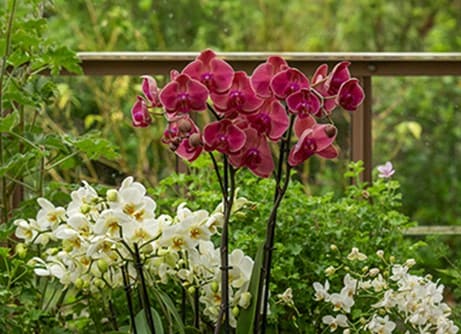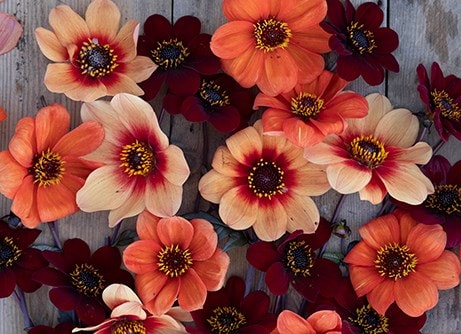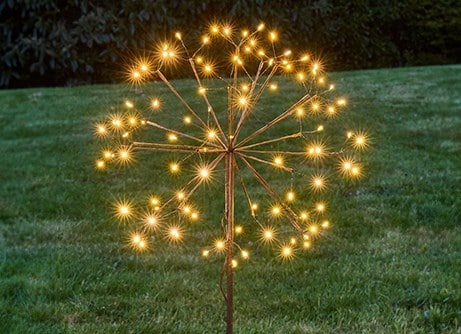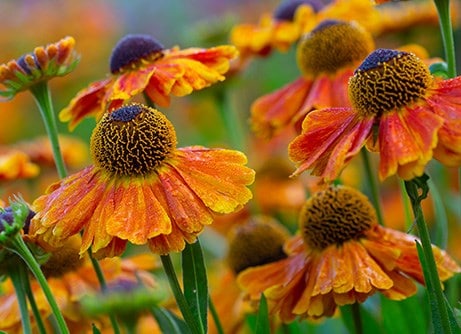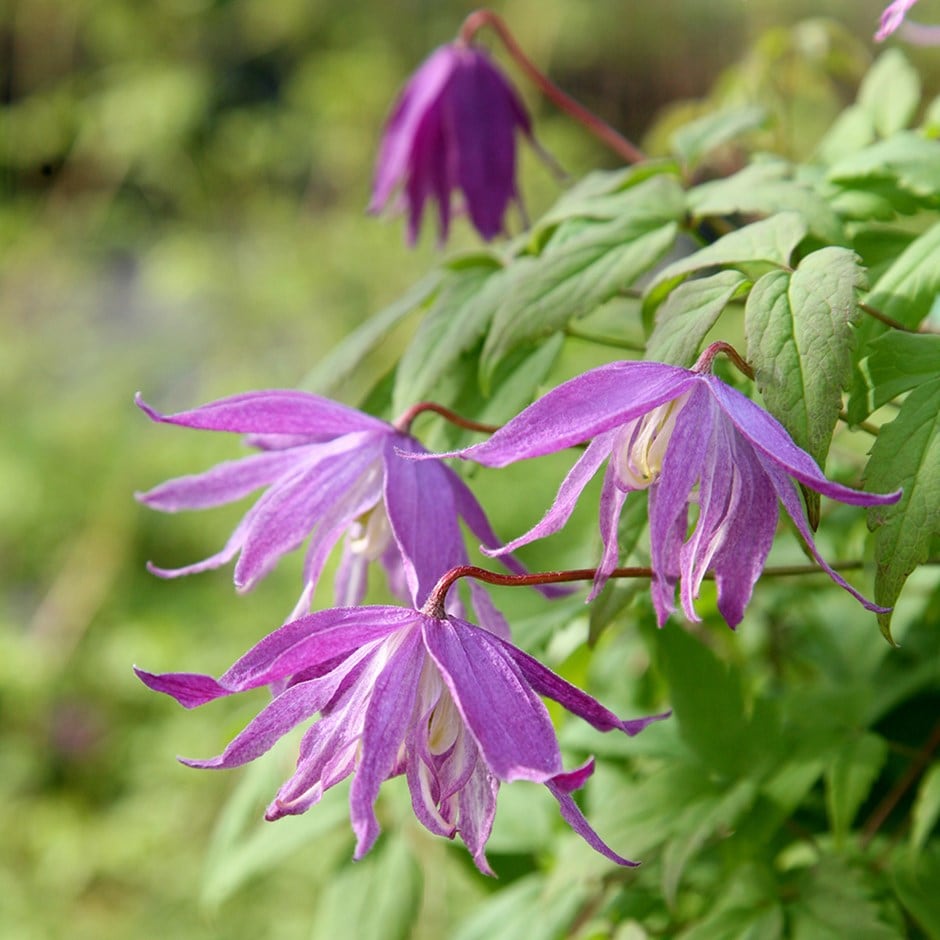To avoid dry conditions, and to ensure good soil contact around the rootball, we advise planting climbers at least 30cm (12in), and preferably 45-60cm (18-24in) away from the base of a wall or fence. An even larger distance should be maintained when planting climbers beside an existing tree or shrub.
Clematis need their roots to be kept cool and moist, so plant the base of these climbers in light shade or provide shading with other plants or a dressing of of pebbles.
No routine pruning is necessary. If the spread of the plant needs to be restricted prune immediately after flowering, cutting back overlong shoots to healthy buds.
Apply a slow-release balanced fertiliser and a mulch of well-rotted garden compost around the base of the plant in early spring.


